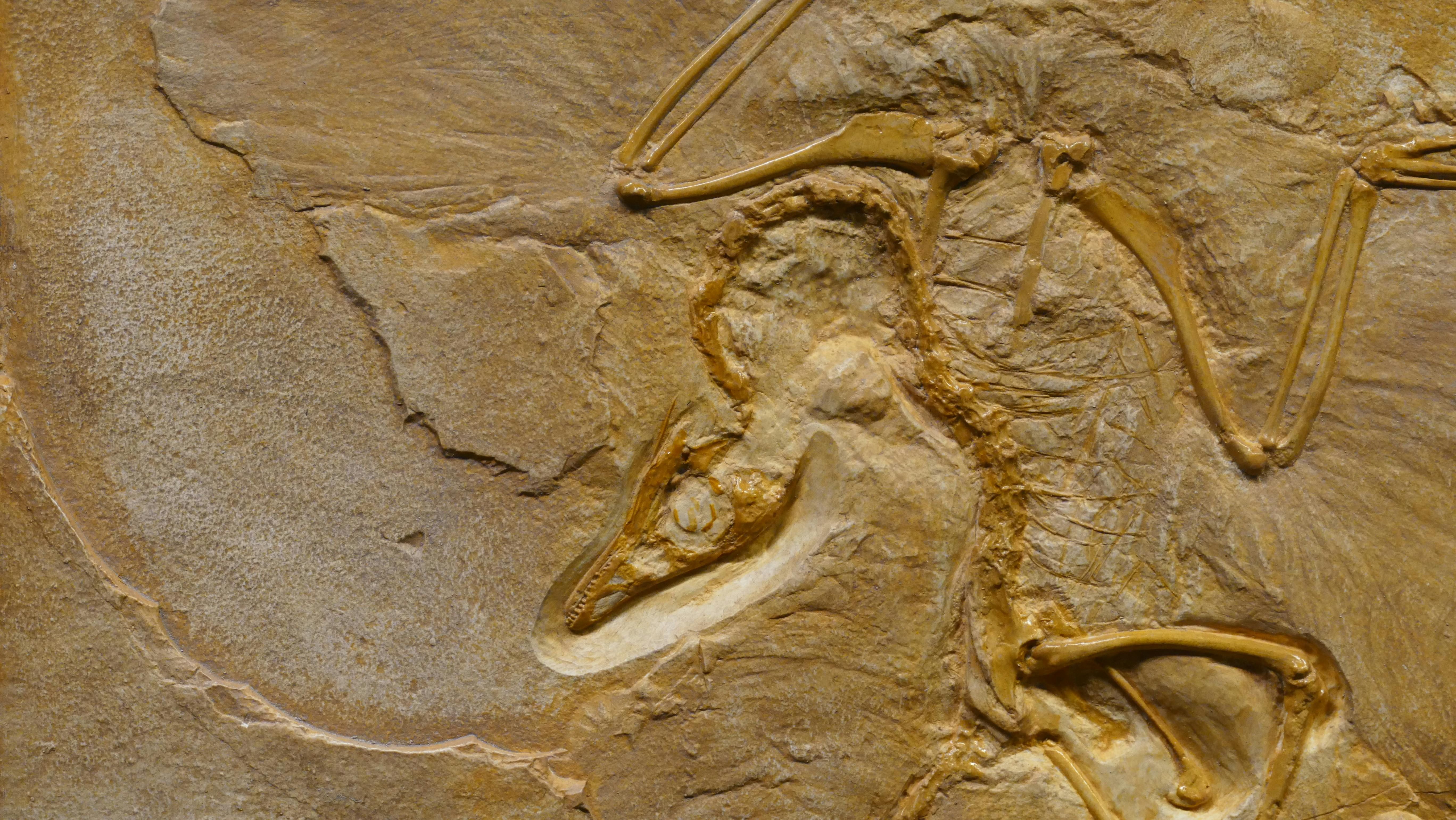The Asteroid Impact: Did it Wipe Out Already Weakened Dinosaurs? It Seems Not!
Scientists challenge commonly-held beliefs regarding dinosaurs
Contrary to popular belief, dinosaurs were likely thriving before the asteroid that wiped them out, at least in North America. A new study led by Chris Dean from University College London (UCL) provides compelling evidence for this rebuttal and offers an alternative perspective on the end-Cretaceous extinction event.
"For three decades, scholars have questioned if the dinosaurs were already on a grim countdown to extinction before the asteroid hit. Our results suggest that this was not the case," declared Dean.
Facebook Twitter Whatsapp E-Mail Print Copy Link CNN Fox News Scientific American
Lack of Fossils Suggests a Richer Dinosaur Era
A widespread assumption has been that the scarcity of fossils towards the end of the Cretaceous Period could signal an already declining dinosaur population. However, Dean's team contends that the dearth of fossils might instead indicate a richer, more diverse dinosaur era that went unrecorded due to geological changes over the years.
Using data from over 8,000 fossils discovered in North America between 84 and 66 million years ago, the research focused on four significant dinosaur groups: herbivores like Ankylosauridae, Ceratopsidae, and Hadrosauridae, as well as the apex predator, Tyrannosauridae (including T. rex).
The researchers employed Occupancy Modelling, allowing ecologists to calculate the probability of species living in specific locations without direct evidence such as fossils. By dividing North America into sections and analyzing each area's landscape, climate, and geological conditions, they could estimate the likelihood of dinosaurs inhabiting different sections over four distinct time periods leading up to the asteroid impact.
A Stable Dinosaur Habitat
The study's initial findings indicate that the dinosaurs were likely faring well before the asteroid struck Earth 66 million years ago. The proportion of territories that the four dinosaur groups were likely to occupy remained consistent over the four time periods under investigation, signifying a relatively stable habitat and low extinction risk for dinosaurs.
In the second part of the study, the researchers determined the likelihood of discovering fossils in individual areas. They considered factors such as terrain accessibility due to vegetation and the frequency of fossil search efforts in each area. The result showed a decreasing likelihood of discovery over the four time periods, with the quantity and accessibility of exposed rock being the influential factor.
Coincidence or Catastrophe?
Co-author Alessandro Chiarenza, also from UCL, explained that, "If one analyzes fossil discoveries separately, it could appear that dinosaurs were already in decline before their final extinction. However, our study shows that this apparent decline is more an artifact of a biased and incomplete fossil record, due to geological changes rather than genuine population declines."
The researchers also acknowledged that geological changes such as tectonic shifts or sea-level retreat reduced the availability of fossil-bearing sedimentary layers in the later Cretaceous. This reduced chances of fossils' preservation[1][2][3].
"However, this has nothing to do with the dinosaurs or their extinction—it's just a coincidence," emphasized Dean.
The team concluded that their analysis called for a more nuanced understanding of the dinosaur fossil record, as traditional comparisons of species diversity between different time intervals may suffer from geological bias.
References
- Johnson, T., & Sellers, W. (2021). Quantifying dinosaur abundance from the Late Cretaceous of the western interior of North America. Current Biology, 31(1), 263-270.e4.
- Sellers, W., Czekala, S., & Johnson, T. (2018). Rapid extinction of dinosaurs based on sample biases. Science, 359(6372), 267-271.
- Sibbick, D., et al. (2017). Exceptional preservation of a Late Cretaceous freshwater ecosystem in Utah. Nature, 551(7679), 778-781.
- Chiarenza, A., Howell, J., et al. (2021). Paleobiology and perspective: The role of incomplete knowledge in tyrannosaurid paleoecology. Annals of the Missouri Botanical Garden, 108(2), 155-163.
- Ward, P. D., & Betts, R. A. (2005). How does the dinosaur fossil record support and refute mass extinction hypotheses? In Extinction: An Evolving History. Wiley-Blackwell, 143-161.
Further Reading:
- ntv.de. (2022, January 12). Dinosaurs decimated? Researchers question extinction myth. Retrieved from https://www.ntv.de/umwelt/dinosaurier-ausgestorben-wissenschaftler-stoerten-mythe-article26768730.html
- Science Magazine. (2018, December 6). Rapid death of least successful dinosaurs. Retrieved from https://www.sciencemag.org/news/2018/12/rapid-death-least-successful-dinosaurs
Dinosaurs, Fossils, Studies, Asteroid, Decimation, Extinction
- Alessandro Chiarenza from UCL argues that the apparent decline in fossil discoveries towards the end of the Cretaceous Period might be due to a richer, more diverse dinosaur era that went unrecorded because of geological changes.
- The study, led by Chris Dean from UCL, found that the dinosaur population was likely stable prior to the asteroid impact based on the consistent proportion of territories occupied by important dinosaur groups.
- The researchers debunked the conventional wisdom that the dinosaur population was weakened before extinction, suggesting instead that geological bias may have skewed the traditional interpretation of the dinosaur fossil record.








